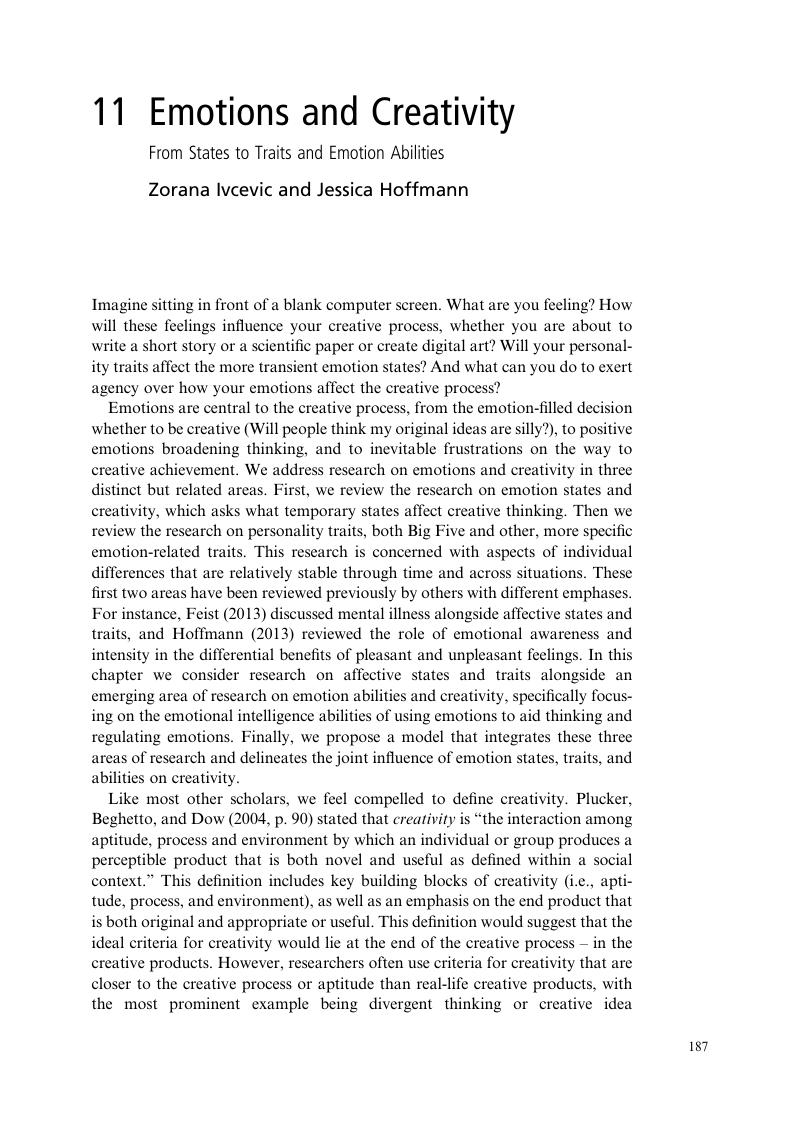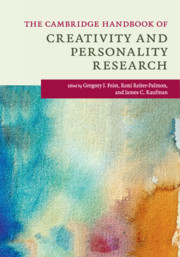Book contents
- The Cambridge Handbook of Creativity and Personality Research
- The Cambridge Handbook of Creativity and Personality Research
- Copyright page
- Dedication
- Contents
- Acknowledgments
- 1 Introduction: The Personal Side of Creativity
- Part I Process and Structure of the Creative Personality
- Part II Creativity and Personality
- 10 Creativity and Personality
- 11 Emotions and Creativity
- 12 Innovation Motivation
- 13 Creative Genius and Psychopathology
- 14 Personality Traits, Personality Disorders, and Creativity
- Part III Creativity and Personality
- Index
- References
11 - Emotions and Creativity
From States to Traits and Emotion Abilities
from Part II - Creativity and Personality
Published online by Cambridge University Press: 19 May 2017
- The Cambridge Handbook of Creativity and Personality Research
- The Cambridge Handbook of Creativity and Personality Research
- Copyright page
- Dedication
- Contents
- Acknowledgments
- 1 Introduction: The Personal Side of Creativity
- Part I Process and Structure of the Creative Personality
- Part II Creativity and Personality
- 10 Creativity and Personality
- 11 Emotions and Creativity
- 12 Innovation Motivation
- 13 Creative Genius and Psychopathology
- 14 Personality Traits, Personality Disorders, and Creativity
- Part III Creativity and Personality
- Index
- References
Summary

- Type
- Chapter
- Information
- The Cambridge Handbook of Creativity and Personality Research , pp. 187 - 213Publisher: Cambridge University PressPrint publication year: 2017
References
- 11
- Cited by

